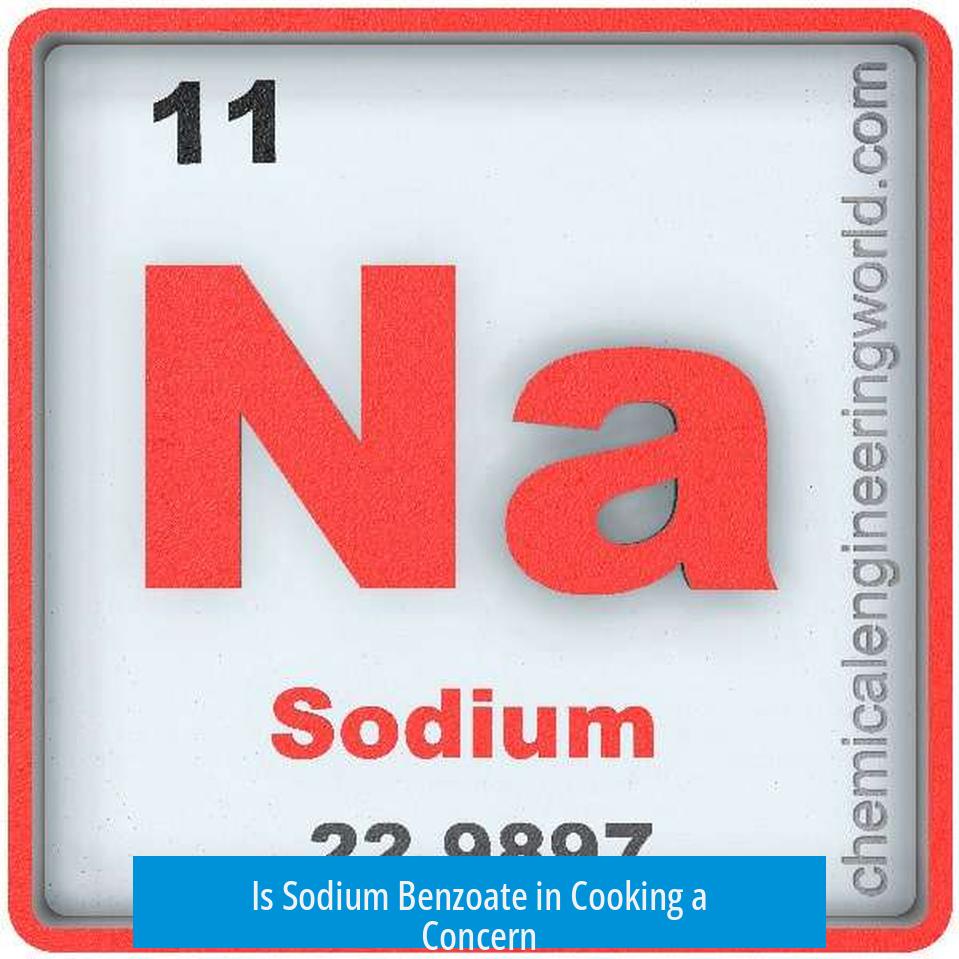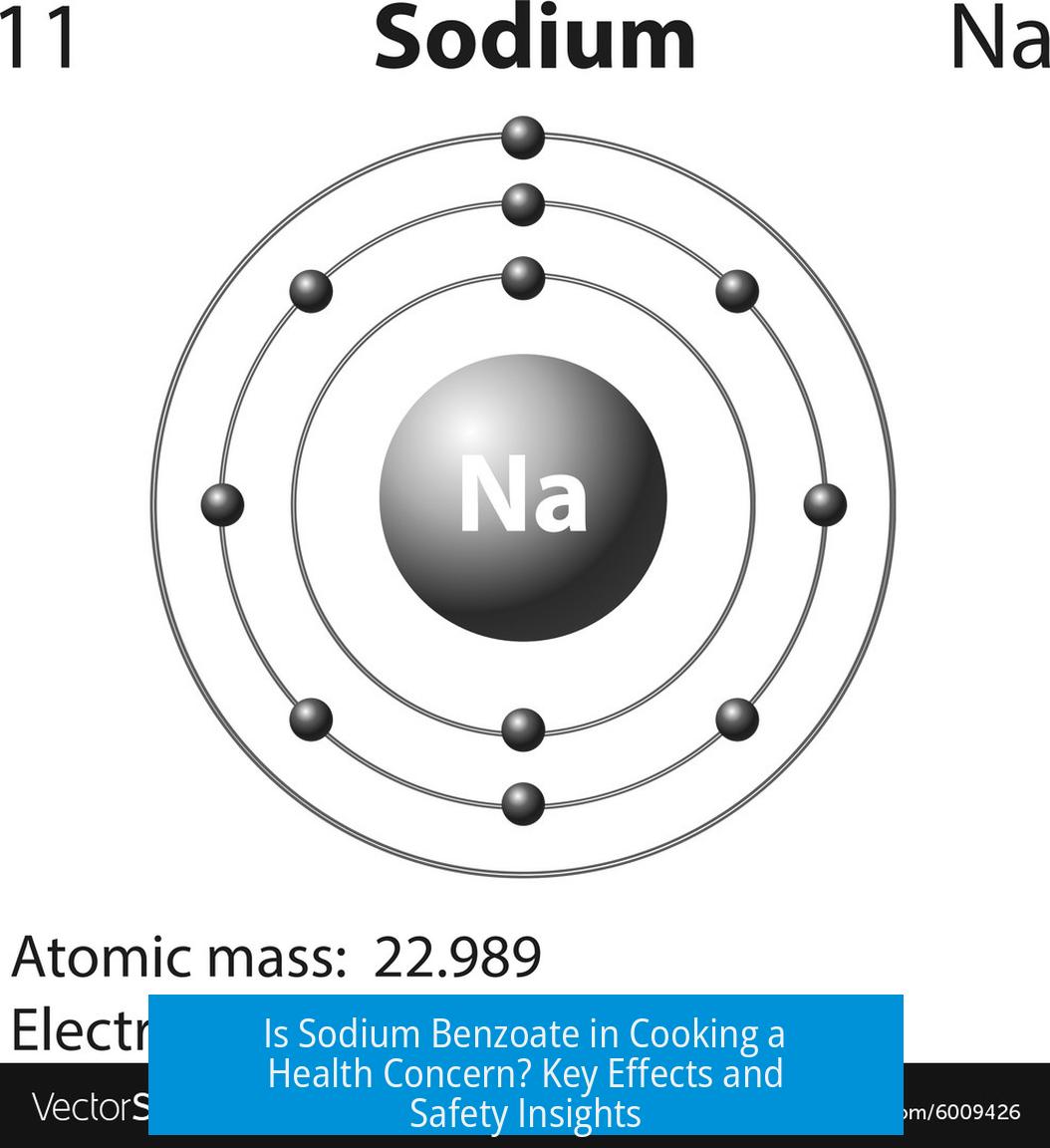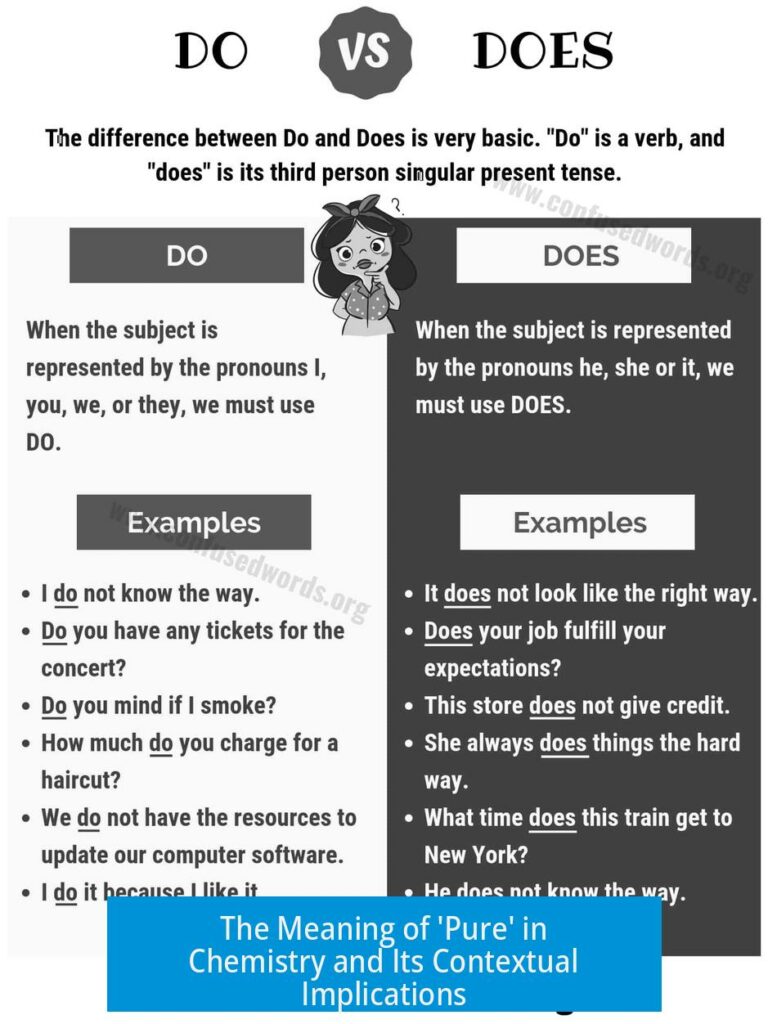Is Sodium Benzoate in Cooking a Concern?

Sodium benzoate used in cooking is generally not considered a safety concern under normal conditions. Its chemical stability and typical usage levels limit harmful transformations like benzene formation during cooking.
Chemical Stability and Cooking Effects
Sodium benzoate remains stable during regular cooking. Claims about its decarboxylation or conversion into benzene—especially when mixed with vitamin C and exposed to heat—lack solid evidence under typical culinary conditions. Reactions producing benzene usually require metal catalysts such as iron and conditions not normally found in kitchens.
Health and Safety Considerations
Although sodium benzoate is safe for most people, some individuals report adverse effects. For example, certain users experience migraines and nausea after consuming foods containing this preservative. These personal reactions do not reflect a general risk but highlight that sensitivity varies.
In terms of usage, sodium benzoate effectively prevents spoilage in sauces and dressings, extending shelf life and maintaining food quality.
Interactions with Vitamin C and Iron
Concerns exist about simultaneous intake of sodium benzoate and vitamin C, particularly regarding benzene formation. However, typical dietary amounts and normal cooking environments make this risk minimal. For individuals needing vitamin C to enhance iron absorption, such as those with anemia, sodium benzoate presence in supplements or foods does not significantly impact their treatment or cause benzoate-related hazards.
Natural Occurrence and Exposure Levels
Benzoates naturally occur in various fruits and foods. Regulatory agencies limit sodium benzoate concentration in food products, usually to about 0.1%, ensuring consumer safety. Misunderstandings sometimes arise about these amounts, but current limits are based on thorough safety assessments.
Comparative Risks
Potential risks from other food contaminants, such as nitrosamines, often surpass concerns linked to sodium benzoate at allowable levels. Focusing on these known risks may be more relevant than excessive worry about sodium benzoate in cooking.
Key Takeaways
- Sodium benzoate remains chemically stable under normal cooking conditions; benzene formation is unlikely.
- Some individuals may experience migraines or nausea from sodium benzoate, but this is not common.
- Its use in foods prevents spoilage effectively and is regulated for safety.
- Interaction concerns with vitamin C and iron supplements lack strong evidence of harm.
- Benzoates occur naturally in foods; regulated use keeps exposure within safe limits.
Is sodium benzoate likely to form harmful benzene when used in cooking?
Sodium benzoate does not readily convert to benzene under normal cooking conditions. The reaction requires specific catalysts and conditions not typical in home cooking.
Can sodium benzoate cause negative reactions like migraines?
Some people report migraines and nausea after consuming sodium benzoate. Individual sensitivity varies, so some may need to avoid it.
Does combining sodium benzoate with vitamin C affect iron absorption?
Concerns exist about interactions, but typical sodium benzoate amounts in supplements and foods do not significantly impact iron absorption with vitamin C.
Is sodium benzoate naturally present in foods?
Yes, several foods contain benzoate naturally. Its presence is not limited to processed products.
Why is sodium benzoate added to sauces and dressings?
It prevents spoilage by inhibiting microbial growth, extending shelf life and maintaining product safety during storage.





Leave a Comment